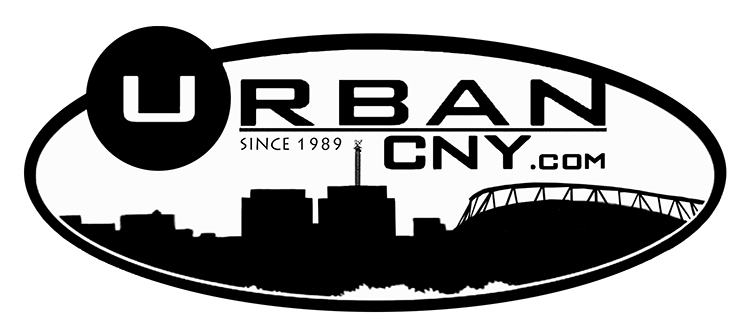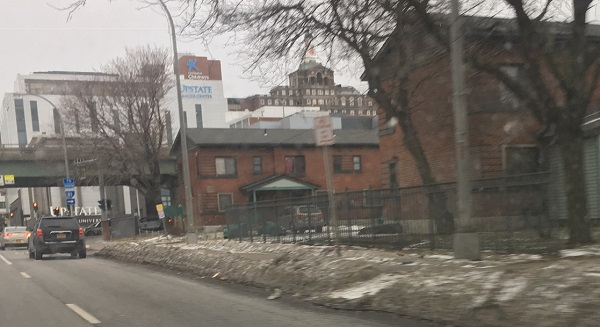I’m following the conversations around Blueprint 15 and the partnership between Syracuse Housing Authority, Allyn Family Foundation, and Purpose Built Communities. I would love to see the thriving “neighborhood for all” proponents are aiming for, but am concerned the lives of the most vulnerable will not be improved, only moved.
That said, I’m heartened to see leaders I respect (and who have been fighting for equity since before I could spell it) on the Blueprint 15 board, and many other wise advocates and community members who are enthusiastic about the concept. It’s my hope that intentions are good, and a true opportunity is at our feet, but I believe it’s the job of the public and the press to advocate and question, to ensure the best possible outcome. I am grateful to Ken Jackson and others for pushing necessary conversations, however difficult, and also to the folks at Allyn Family Foundation for responding.
In the spirit of that dialogue, and after talking with folks in the community and listening to SHA Director Bill Simmons, and Allyn Family Foundation Director Meg O’Connell speak about the project on WRVO’s Campbell Conversations, on Saturday, I have some concerns:
- According to Simmons, displaced Pioneer Homes, Central Village, and McKinney Manor residents will receive Section 8 housing choice vouchers, and will have the right to return when construction is complete. However my understanding is there will not be one-to-one replacement of low-income housing in the new design, since the area will be split with market rate and commercial spaces. When all is said and done, are we losing public housing units? We currently have 2,340 units, with thousands of people on waiting lists. The list for Section 8 vouchers has been closed for ten years and still has 3,000 people waiting.
- Affected residents will be relocated in phases, and Simmons said he’s confident the local housing market can easily accommodate them. Considering Syracuse’s deficit of public housing and the scarcity of landlords who will accept Section 8, let alone accept it and provide safe, well maintained housing, I am concerned that people with vouchers to “go anywhere” will in reality have nowhere to go.
- It’s disruptive and costly to move, and yet 25% of Syracuse residents are forced to do so at least once per year. Regardless of how much input residents may have in the planning process (there are currently two residents on the Blueprint 15 board), they may not have the means to move back and take advantage of the improvements, even if they want to. Will they just continue to be poor, elsewhere?
- Why aren’t community groups like TNT Southside represented on the board?
- I understand that regardless of the outcome of the I-81 debate, it will not be an option for residents to remain in Pioneer Homes, Central Village, and possibly McKinney Manor. Considering our inadequate public transportation and sprawling city, we must recognize there are few locations with the same proximity to the Centro Transit Hub, hospitals, and downtown offices and businesses, including the social services many rely upon. Moving to a less central location can add a great deal of travel time and complication for the folks who ironically are least likely to use I-81, because many do not have cars. This means less time with family, less time to attend to personal health and well being, and more time out in the elements. I am all for deconcentrating poverty, but worry in this case specifically what it will cost for the poor.
- Children who rely on the Boys and Girls Club for programming and Dr. King school also must be accommodated compassionately. The move will be disruptive for kids who are already dealing with too much, and potentially take them away from some of the most important and grounding spaces they have outside the home. Specific targeted support is needed throughout the transition to assure the positive outcomes of this project benefit these children, first and foremost.
- Mr. Simmons said many residents are interested in moving out of the area. If that is true, and folks are able to afford to pack up and leave Syracuse because that’s what they want, that’s great. But as a wise friend pointed out to me today, we may improve the conditions within a geographical area by changing the demographic, but again, the folks pushed out will still be poor. We owe it to them and to the children, grandchildren, and great-grandchildren of the 15th Ward to specifically ensure their lives are improved.
- I spoke with my friend Deka Dancil, who was a child living with her mother and siblings in the Kennedy Square Apartments when that complex was demolished and tenants in 409 affordable housing units were pushed out, in 2007. She said it was the nicest apartment she lived in, throughout her whole childhood.
- For people relying on private housing, the standards for safety and condition are not the same as in public housing. Another friend of mine is currently being pushed out of the home she has been living in on the North Side for barely a year because her landlord has failed to comply an order from the Onondaga County Department of Health to remediate the lead paint that has poisoned her children. There aren’t a lot of good options out there, unfortunately, and we must avoid repeating our mistakes. Today, the neighborhood around the former Kennedy Square may seem “improved” to some. There are nice office buildings, several luxury apartment buildings, restaurants, and a trendy bike shop. But is life improved for the former residents? Where are they now, and what is their life like? Can they afford those restaurants and housing? See link to this letter re Kennedy Square: Sweetheart deal for Kennedy Square Hurts Poor-Letters


CRIME AND “QUALITY OF LIFE”
- I have been looking into some of the other communities where Purpose Built has intervened. There’s a lot of really nice sounding PR and stats such as a 97% reduction in violent crime for the East Lake community in Atlanta GA. One tenant who lived in both iterations of the housing complex said “They tore down hell, and they built heaven. Now we are living in paradise.” That sounds wonderful, and I am truly happy Ms. Eva Davis lived to see that happen. But again, poverty (and the social problems that come along with it) weren’t fixed; rather the poor (or most of them) were moved out.
- There are also policies that come along with the mixed income housing. Concerning the aforementioned Atlanta project, I found this:
“When the housing project was torn down, the requirements for residents who wanted to return to the neighborhood were that they have no felonies on their record, and be either employed or in training. Although these requirements exempted only 13% of the residents, ultimately only about a quarter of families elected to return.” [Source: Here’s how one Neighborhood is Fighting the Negative Aspects of Gentrification
- What other kinds of policies might adversely affect the community that most deserves to be there? How can we avoid some of the failures of mixed income housing, to ensure this doesn’t happen?
- If we are truly planning to integrate the existing community with market rate tenants and commercial spaces, what are we going to do to prevent BBQ Becky, Permit Patty, Corner Store Caroline, etc., from calling the police on folks for living their lives? Are we ready to train our police force to handle white supremacy in this context, instead of criminalizing the black and brown folks when conflicts arise?
- Will the poor residents be able to afford the amenities offered by incoming commercial tenants in the revitalized neighborhood? Will they be able to eat at the restaurants, buy the coffee, sign up for the yoga classes, or shop at the stores?
These are some of the questions bouncing around for myself and others. My intention is not to be in opposition to this project. I’m not in opposition to it, and am holding onto my optimism that we can do this right, because I believe in my city. But I also believe in my city’s history, and know that if we don’t explicitly build equity into the fabric of every aspect of Blueprint 15, we will not achieve it, despite the best of intentions. I hope we can work together as a community to learn from past mistakes and truly follow through on building a true neighborhood and city “for all”.









